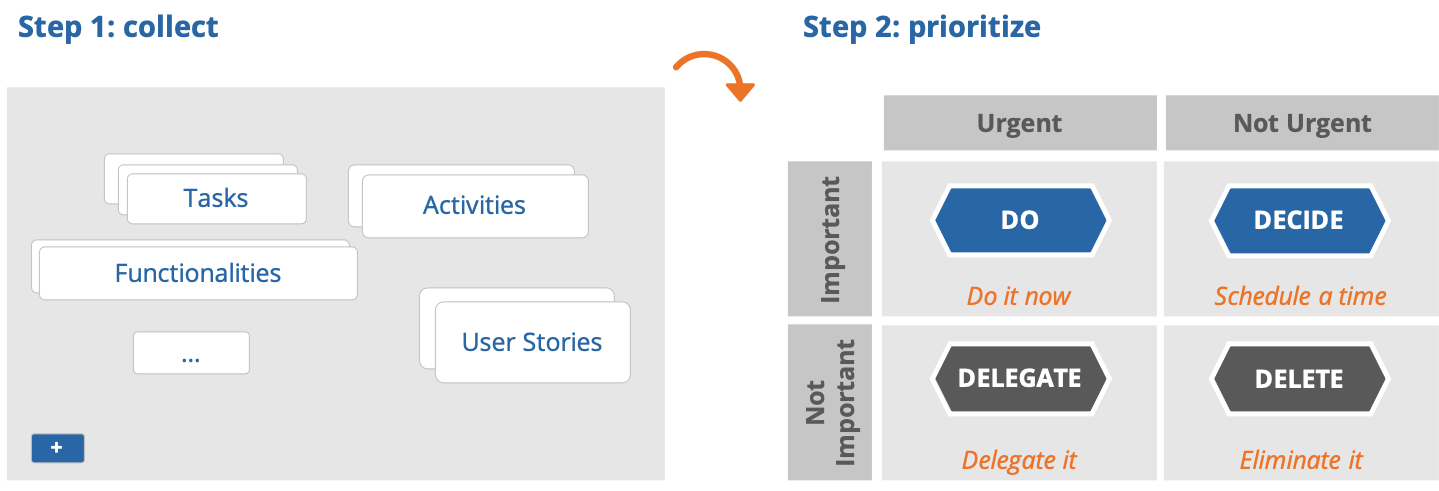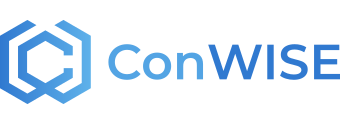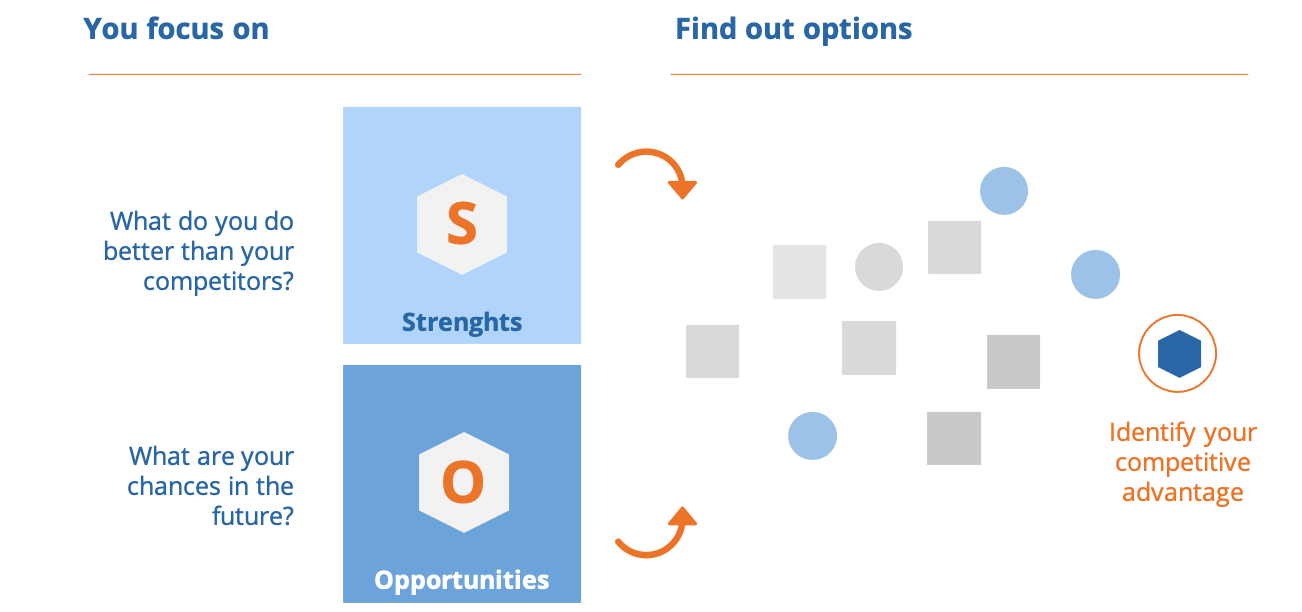Eisenhower matrix

Eisenhower Approach
Procedure and application of the Eisenhower Matrix
- In a first step, collect all your tasks to be completed, upcoming activities, problems or desired functionalities.
- Then assign your collected points to four possible fields that represent importance and urgency:
- Field 1: Urgent and important (should be done immediately).
- Field 2: Important but not urgent (can be done later).
- Field 3: Urgent but not important (can be delegated).
- Field 4: Neither urgent nor important (can be deleted)
Description of the Eisenhower principle
The Eisenhower matrix is also called the Eisenhower principle or Eisenhower method. The application dates back to Dwight D. Eisenhower, the 34th President of the United States. It is a simple productivity tool to organize tasks, problems or even functionalities (e.g. for a new product). The easy-to-use 2 x 2 field matrix enables tasks to be classified according to their importance and urgency. The method is now also finding its way into Agile Management. So-called product owners use it to classify new requirements and thus determine the order in the backlog.
Thematic classification
Method for sustainable problem solving.
Who benefits from this method?
- Management
- Departments
- Developer teams
- Product Owner (Scrum)
Practical hints
- How do you distinguish important from urgent tasks? A task is important when something is at stake, eg having a direct impact on the profit or loss of a company. A task is urgent if it has a short-term completion date. The important tasks are rarely urgent and the urgent ones are not always important.
- Especially when a manager is new to a company, a large number of tasks or topics quickly arise. It is helpful to be productive quickly. The use of the digital template on ConWISE also offers the opportunity to ask new colleagues for a personal assessment according to the Eisenhower priority. Read more about this in our article “5 tips for the first 100 days with a new employer” .
Limits of Application
- These methods are based on the assumption that we work self-determined, i.e. that we can assign priorities ourselves. In most cases, however, the priorities are set by third parties, such as owners, financiers or the product owner. This must be taken into account.
- The Eisenhower method is particularly suitable for managers who can delegate tasks to others. If this option does not exist, such as for trainees or temporary workers, one field of the matrix (urgent but not important) is in principle omitted. It then only remains to classify it as doing it now or doing it later.


